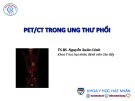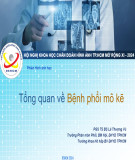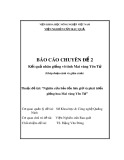
RESEA R C H Open Access
Augmentation of neovascularization in murine
hindlimb ischemia by combined therapy with
simvastatin and bone marrow-derived
mesenchymal stem cells transplantation
Yong Li
1,2†
, Dingguo Zhang
3†
, Yuqing Zhang
4†
, Guoping He
2
, Fumin Zhang
1*
Abstract
Objectives: We postulated that combining high-dose simvastatin with bone marrow derived-mesenchymal stem
cells (MSCs) delivery may give better prognosis in a mouse hindlimb ischemia model.
Methods: Mouse hindlimb ischemia model was established by ligating the right femoral artery. Animals were
grouped (n = 10) to receive local injection of saline without cells (control and simvastatin groups) or with 5 × 10
6
MSCs (MSCs group).Animals received either simvastatin (20 mg/kg/d, simvastatin and combination groups) or saline
(control and MSCs group) gavages for continual 21 days. The blood flow was assessed by laser Doppler imaging at
day 0,10 and 21 after surgery, respectively. Ischemic muscle was harvested for immunohistological assessments and
for VEGF protein detection using western blot assay at 21 days post-surgery. In vitro, MSCs viability was measured
by MTT and flow cytometry following culture in serum-free medium for 24 h with or without simvastatin. Release
of VEGF by MSCs incubated with different doses of simvastatin was assayed using ELISA.
Results: Combined treatment with simvastatin and MSCs induced a significant improvement in blood reperfusion,
a notable increase in capillary density, a highest level of VEGF protein and a significant decrease in muscle cell
apoptosis compared with other groups. In vitro, simvastatin inhibited MSCs apoptosis and increased VEGF release
by MSCs.
Conclusions: Combination therapy with high-dose simvastatin and bone marrow-derived MSCs would augment
functional neovascularization in a mouse model of hindlimb ischemia.
Introduction
Peripheral arterial disease (PAD) is one of the most com-
mon clinical manifestations of atherosclerosis, which
affects a significant number of individuals. It represents
an important cause of disability and is associated with
elevated cardiovascular morbidity and mortality[1].
Treatment of PAD includes anticoagulants and antiplate-
let drugs, percutaneous transluminal angioplasty, and
bypass surgery. However, the prognosis for patients with
PAD still remains poor, and amputation of the lower
extremities is often required [2]. Several types of stem
cells have been used for therapeutic neovascularization,
including the bone marrow-derived mesenchymal stem
cells (MSCs), which have attracted a great attention from
investigators because of their plasticity and availability[3].
These cells mediate their therapeutic effects by homing
to and integrating into injured tissues, differentiating into
endothelial cells, and/or producing paracrine growth fac-
tors. However, recent studies have shown that patients
with PAD are often coincident with cardiovascular risk
factors, such as aging, diabetes mellitus, which reduce the
availability of progenitor cells and impair their function
to varying degrees[4-6], likely limiting the efficiency of
stem cell therapy. Therefore, optimization of strategies to
improve the therapeutic potential of cell therapy needs to
* Correspondence: zhdg0223@126.com
†Contributed equally
1
Department of Cardiology, the First Affiliated Hospital of Nanjing Medical
University, 210029, R.R. China
Full list of author information is available at the end of the article
Li et al.Journal of Biomedical Science 2010, 17:75
http://www.jbiomedsci.com/content/17/1/75
© 2010 Li et al; licensee BioMed Central Ltd. This is an Open Access article distributed under the terms of the Creative Commons
Attribution License (http://creativecommons.org/licenses/by/2.0), which permits unrestricted use, distribution, and reproduction in
any medium, provided the original work is properly cited.






























